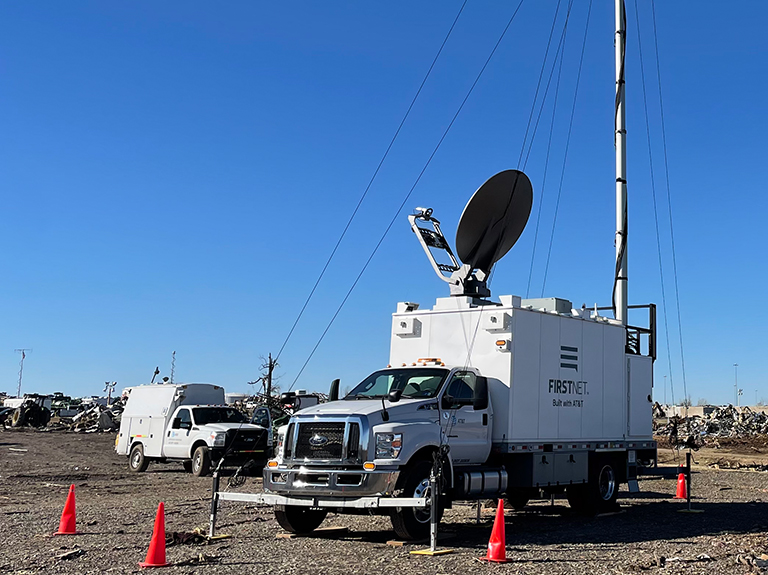Earlier this year, we celebrated the 50th anniversary of the U.S. 911 system – our lifeline to public safety. It’s hard to imagine 911 has only been around 50 years. Or to think about what life was like without it.
In its short life, it’s had an enormous impact on emergency response. And it’s also helped spark our increased fascination with emergency services – just look at the countless TV dramas that depict life-or-death challenges and the first responders who put their lives on the line to answer the call. But 911’s history and its future are more complex than what we see on TV.
A Look Back
Before 911 was introduced by AT&T in 1968, callers dialed the operator to be connected to emergency services or they had to know the phone number of the local fire or police station. Neither was ideal in an emergency where every second matters.
So, the introduction of 911 was a gamechanger. And now, according to the National Emergency Number Association, about 240 million calls are made to 911 each year.1
But the landscape the 911 system was built for 50 years ago looks drastically different today. More than 50% of U.S. households are cell-phone only.2 And the National Emergency Number Association has reported that more than 80% of 911 calls are made from a wireless device.3 This trend is expected to continue, growing to 97% by 2022.4
To create the best experience between callers and 911 telecommunicators, the system has gone through updates over the years – like Enhanced 911 that helped identify both a caller's phone number and location. Further updates for the wireless world have also been underway for quite some time. But more are needed to truly keep pace with how we communicate today. Think mobile, text, photo and video communications as examples.
Looking Ahead
Our commitment to advancing public safety has only intensified over the past 50 years. And we’re focused on helping to drive the next 50 years of 911 forward.
One of the ways we’re doing this is through NextGen 911 solutions. This is an effort to modernize the 911 system from analog to digital to better handle and route wireless calls. The goal? Help Public Safety Answering Points (PSAPs) keep up with the current and future needs of their communities.
NextGen 911 solutions like AT&T ESInet™ offer increased reliability, resiliency and security when transferring calls based on location tracking or managing call volumes. All of which is critical in driving a more seamless response and better outcomes.
NextGen 911 solutions also allow the public to communicate with 911 in more ways – enabling the receipt of not just voice communications, but also text, data, photos and videos. This is important as there are emergency situations where voice may not be an option. Or when pictures and videos can help add to first responders’ situational awareness of an incident on top of what’s provided via voice.
It’s up to each state and locality to determine when they’re ready to transition to NextGen 911 capabilities. And we’re proud to be working with several states and localities as they plan for and make the transition to NextGen 911.
Take the state of Kansas for example.
Kansas initiated the first statewide deployment of AT&T ESInet™ in 2017. Today, nearly 60 PSAPs are on the platform serving over 1.3 million people.
And in North Carolina, AT&T ESInet has been deployed in the cities of Durham and Raleigh-Wake. The platform was in place during Hurricane Florence and helped PSAPs in the affected area. During the hurricane, citizens placed over 225,000 calls to 911 statewide – helping route calls appropriately to get help to citizens faster. The state’s goal is to have all 127 PSAPs migrated to ESInet by the end of 2021.
As we look to the future, we’re not only changing how the public communicates with 911 but also “what” can communicate with 911. We envision increased opportunities to bring more “things” into the public safety fold. Technologies like AT&T ESInet, smart cities solutions and FirstNet are helping this vision become a reality.
Together, these technologies can create a more data-driven environment to improve coordination and collaboration and equip first responders with details that can lead to more lives saved.
We’re also working to improve 911 wireless location accuracy by integrating new technologies such as device-based location. This uses the same technology to locate you as your pizza delivery. And, we’re collaborating with the rest of the wireless industry to translate your location even further to get public safety an address, so first responders know exactly where to find you.
To ensure 911’s success over the next 50 years, we all have a part to play – from PSAPs prioritizing the replacement of outdated technology to industry players focusing on new, standards-based innovations that solve for the challenges presented by today’s mobile environment. Ultimately, this will lead to a future where faster call delivery for multiple formats, increased routing accuracy, enhanced redundancy across 911 centers, and improved performance for call overflow and back up are commonplace in every city, state and town.
Like the initial rollout of 911, this future state will take time to achieve. But we’re excited for what’s to come and can’t wait to keep the progress advancing forward as we step into 2019.
Sources:
1 National Emergency Number Association.
3 National Emergency Number Association.
4 Frost & Sullivan.


